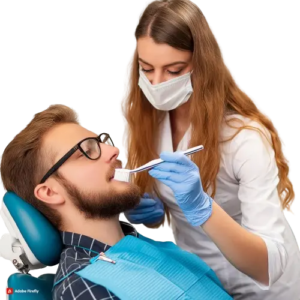Most Common Dental Procedures
 The American Dental Association recommends that most children and adults go to their dentist for routine oral exams and professional dental cleanings twice each year. Some people need to go more frequently, especially if they have gum disease, a high risk of cavities or chronic health conditions such as diabetes that affect oral health. In addition to routine dental cleanings, many people need to have dental procedures performed. There are three common procedures that a patient may need to have performed by a dentist, orthodontist or endodontist.
The American Dental Association recommends that most children and adults go to their dentist for routine oral exams and professional dental cleanings twice each year. Some people need to go more frequently, especially if they have gum disease, a high risk of cavities or chronic health conditions such as diabetes that affect oral health. In addition to routine dental cleanings, many people need to have dental procedures performed. There are three common procedures that a patient may need to have performed by a dentist, orthodontist or endodontist.
Root Canal Treatment
The most common treatment performed by endodontists is a root canal. Root canal treatments involve the removal of inflamed or infected tooth pulp. The pulp of the tooth is where its nerve is located. An infection in this part of the tooth often causes pain. Bacteria enter the tooth through a deep cavity or crack that goes through the enamel and dentin layers. The interior of the tooth is cleaned, disinfected and filled with an inert material. Because much of the tooth’s structure is damaged or decayed, most patients will need to have a permanent crown placed on the tooth that received root canal treatment. The crown may be fit by the dentist or the endodontist. The process of getting a root canal takes two to three visits. Patients can expect to feel a little pressure during the procedure, but numbing medication eliminates pain during the treatment.
Tooth Extraction
General dentistry professionals commonly perform tooth extraction procedures. A tooth may need to be extracted if it has severe damage. A large crack or area of decay may necessitate extraction. Many people also need to have wisdom tooth extraction. These third molars grow into the jaw in a person’s late teen or early adult years. In many cases, there is not enough room in the jaws for these teeth to erupt properly without shifting the other teeth out of their ideal alignment. A tooth with a severe infection or failed root canal treatment may also need to be extracted. Patients receive a local anesthetic and sedation during an extraction. These medicines minimize pain and relax the patient.
Bite Correction
Orthodontists commonly perform treatments that correct the alignment of the teeth. Most of these treatments involve the use of braces and bands. The metal or ceramic brackets and rubber bands may be placed on all of the teeth on the upper or lower jaw or on several teeth in a row, depending on what needs to be fixed. Orthodontists also install appliances such as palate expanders. These devices are used to permanently widen the arch of the palate. Many patients who have had their teeth realigned with orthodontic braces or appliances use a permanent or removable retainer for 10 years or more. The retainer keeps the teeth in their proper positions within the jaws. Patients can expect regular visits every four to eight weeks during orthodontic care. When an orthodontic adjustment is performed, patients may feel sore for a day or two.

